In the enchanting world of wetlands, where lush vegetation and abundant water intertwine, there lies a hidden gem waiting to be discovered.
Isoetes Velata is an aquatic fern of unparalleled beauty and intrigue. Join us as we delve into the depths of the wetlands and uncover the secret life of this extraordinary plant.
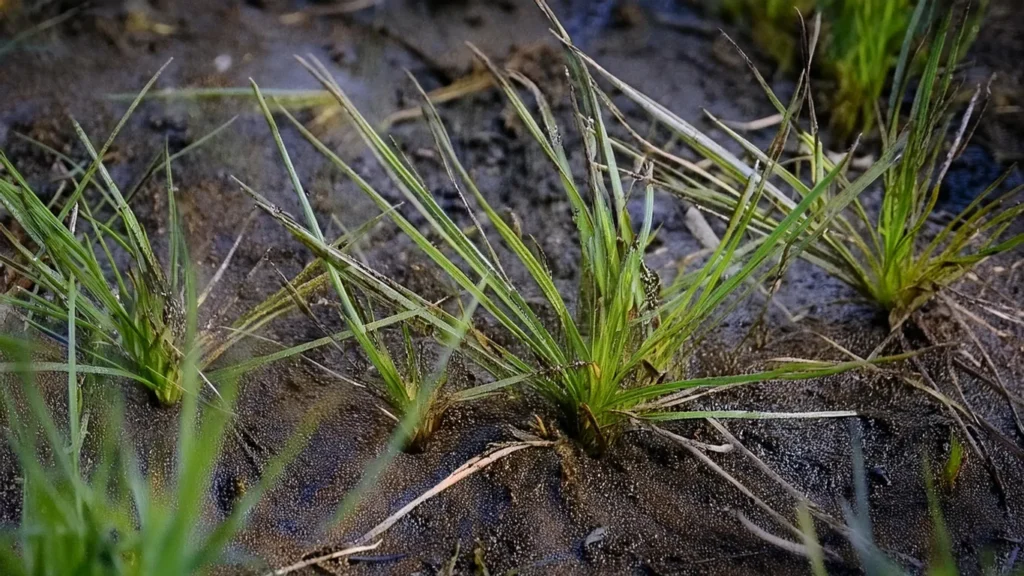
Key Takeaway
- Isoetes Velata is a captivating aquatic fern found in wetland environments.
- Exploring the unique characteristics and conservation status of Isoetes Velata sheds light on its significance.
- Tropical wet environments and cold water ecosystems play crucial roles in the growth and survival of Isoetes Velata.
- Isoetes Velata belongs to the genus Isoetes, which has a rich evolutionary history dating back to the Palaeozoic era.
- Understanding the endemic nature and geographical distribution of Velata Quillwort highlights the importance of preserving rare plants.
Quick Stats
| Attribute | Details |
| Family Name | Isoetaceae |
| Origin | Specific to Isoetes velata not widely documented; Isoetes species are found globally |
| Height | Typically 5-15 cm (2-6 inches), depending on the species and conditions |
| pH Range | 6.0 – 7.5, adaptable |
| CO2 Requirement | Low |
| Growth Rate | Slow |
| Care Level | Moderate to Difficult, due to specific habitat requirements |
| Color Form | Dark Green |
| Water Conditions | Cool to temperate, specific ranges not widely documented |
| Max Size | Species-dependent, generally compact |
| Lighting | Low to Moderate |
| Supplements | Minimal; may benefit from a nutrient-rich substrate |
| Placement | Foreground to Mid-ground |
| Propagation | Spores or division of the corm |
What Is Isoetes Velata?
Isoetes Velata is a species of aquatic fern that belongs to the Isoetaceae family.
This rare and beautiful plant can be found in various tropical wet environments, such as rice paddies, and in cold water ecosystems, including nutrient-poor lakes.
These environments are crucial for the growth and survival of Isoetes Velata, shaping its unique characteristics.

Natural Habitat And Origin
Isoetes velata, commonly known as velate quillwort, is a species of aquatic fern that belongs to the Isoetaceae family.
It is native to North America, where it is primarily found in freshwater habitats such as lakes, ponds, streams, and marshes.
Velate quillwort typically grows in shallow, clear waters with sandy or muddy substrates.
This species is known for its ability to thrive in nutrient-poor environments and is often found in areas with low levels of organic matter.
Isoetes velata plays an important ecological role in its natural habitat by providing habitat for various aquatic organisms and contributing to the overall biodiversity of freshwater ecosystems.
Characteristics And Care Of Isoetes Velata
- Lighting: Isoetes Velata prefers moderate to low light conditions. It thrives best in partially shaded areas or under indirect sunlight.
- Watering: As an aquatic fern, Isoetes Velata requires consistently moist soil. Keeping the soil moist but not waterlogged is important, as excessive moisture can lead to root rot.
- Temperature and Humidity: Isoetes Velata prefers cool to moderate temperatures and thrives in high-humidity environments. Avoid extreme temperature fluctuations that can stress the plant.
- Soil pH and Composition: Isoetes Velata grows well in slightly acidic to neutral soil with good drainage. A peat moss, sand, and perlite substrate mix can provide the ideal growing conditions.
- Fertilization: Due to its slow growth rate, Isoetes Velata requires minimal fertilization. Use a diluted and balanced liquid fertilizer once every couple of months during the growing season.
RELATED: A Guide To Cultivate Eleocharis Parvula (Dwarf Hairgrass) At Home
Lighting Needs
- Moderate to High Light: Isoetes velata generally thrives in moderate to high-intensity lighting conditions. In its natural habitat, it is often found in shallow waters where it receives ample sunlight. Therefore, providing moderate to high lighting levels in the aquarium mimics its natural environment and supports healthy growth.
- Full Spectrum Lighting: Like many aquatic plants, Isoetes velata benefits from full spectrum lighting that includes a balance of different wavelengths, including blue, red, and green light. Full spectrum lighting promotes photosynthesis and overall plant health.
- Duration of Light: In addition to intensity, the duration of light exposure is also important for Isoetes velata. Aim for a lighting period of around 8 to 10 hours per day to simulate natural daylight cycles. Providing a consistent photoperiod helps regulate the plant’s biological processes and prevents overexposure to light.
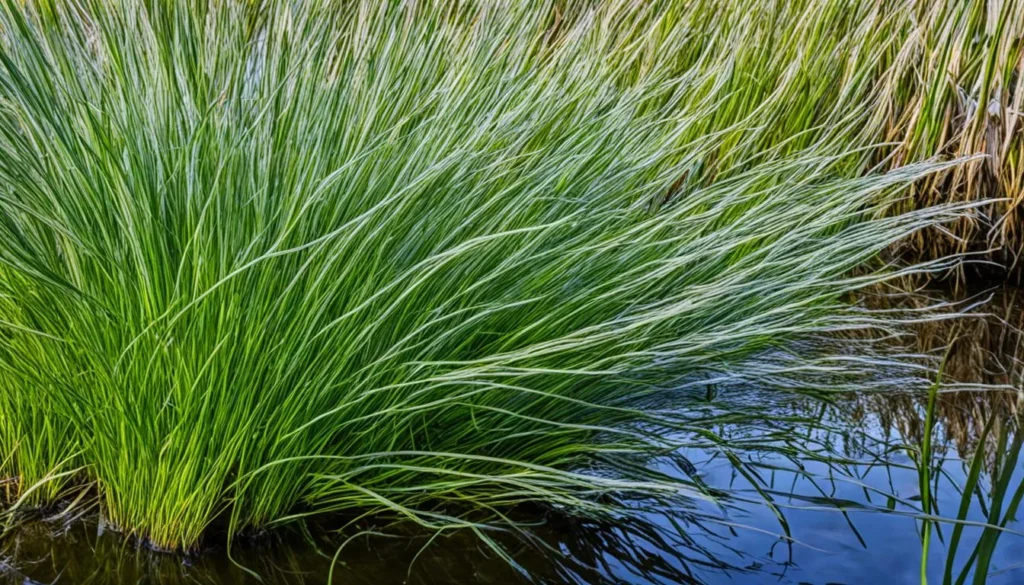
Water Parameters
- Temperature: Isoetes velata prefers water temperatures within the range of 18°C to 25°C (64°F to 77°F). Keep the water temperature stable within this range to prevent stress and ensure optimal growth.
- pH Level: Maintain a slightly acidic to neutral pH level for Isoetes velata, ideally between 6.5 to 7.5. Avoid extreme fluctuations in pH, as this can adversely affect the plant’s health and overall aquarium stability.
- Water Hardness: Isoetes velata can tolerate a wide range of water hardness levels, but it generally prefers soft to moderately hard water. Aim for a general hardness (GH) of 4 to 12 dGH and carbonate hardness (KH) of 3 to 8 dKH.
- Ammonia and Nitrite: Ensure that ammonia and nitrite levels in the aquarium are consistently kept at zero. Ammonia and nitrite are toxic to aquatic plants and can harm Isoetes velata if present in elevated concentrations. Regular water testing and proper aquarium maintenance are essential to prevent ammonia and nitrite spikes.
Temperature Condition For Optimal Growth
- Temperature Range: Isoetes velata typically grows best in water temperatures ranging from 18°C to 25°C (64°F to 77°F). This temperature range is well-suited to its natural habitat preferences and supports healthy growth and development.
- Stability: While Isoetes velata can tolerate fluctuations in temperature to some extent, it prefers stable water temperatures within its optimal range. Sudden or extreme fluctuations in temperature can stress the plant and hinder growth. Therefore, maintaining consistent water temperatures is important for promoting optimal growth.
- Aquarium Heater: In aquarium settings, use a reliable aquarium heater to regulate water temperature and ensure it remains within the preferred range for Isoetes velata. Set the heater to maintain a stable temperature within the recommended range, taking into account factors such as room temperature and seasonal variations.
- Avoid Temperature Extremes: Avoid exposing Isoetes velata to temperature extremes, such as prolonged periods of high temperatures or sudden drops in temperature. Extreme temperatures can adversely affect the plant’s health and lead to growth issues or even mortality.
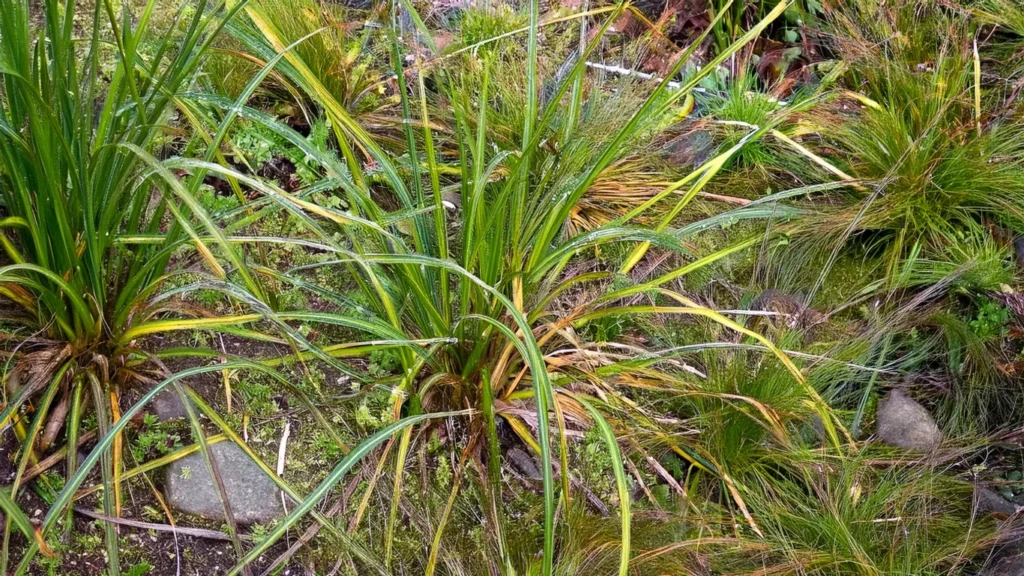
Substrate Requirement
- Sandy or Muddy Substrate: Isoetes velata thrives in sandy or muddy substrates commonly found in freshwater habitats such as lakes, ponds, and streams. These substrates provide stability for the plant’s roots and allow for anchoring as well as nutrient absorption.
- Fine Particle Size: Opt for a substrate with a fine particle size to mimic the natural habitat of Isoetes velata. Fine particles provide a stable environment for root anchorage and facilitate nutrient uptake by the plant.
- Nutrient Availability: While Isoetes velata can thrive in nutrient-poor environments, providing a substrate with some nutrient content can support healthy growth. Consider using nutrient-rich substrates or supplementing with root tabs to ensure adequate nutrient availability for the plant.
- Depth: The depth of the substrate can vary depending on the aquarium setup and aquascape design. Aim for a substrate depth of at least 2 to 3 inches (5 to 7.5 centimeters) to provide sufficient anchorage for Isoetes velata roots.
- Aquarium Setup: When setting up the aquarium, carefully layer the substrate to achieve the desired depth and ensure even coverage across the tank bottom. Gently slope the substrate towards the back of the aquarium to create depth and perspective in the aquascape.
Placement Options
- Foreground: Isoetes velata can be placed in the foreground of the aquarium to create a visually striking focal point. Plant it in groups or clusters along the front or sides of the tank to accentuate its delicate foliage and provide a sense of depth to the aquascape.
- Midground: Alternatively, Isoetes velata can be positioned in the midground of the aquarium to complement other aquatic plants and create a balanced layout. Plant it among other midground plants to add texture and interest to the middle portion of the tank.
- Background: While Isoetes velata is typically smaller in size compared to some other aquarium plants, it can still be used effectively in the background of the aquarium, especially in smaller tanks or nano setups. Plant it along the back of the tank to add vertical dimension and create a sense of depth.
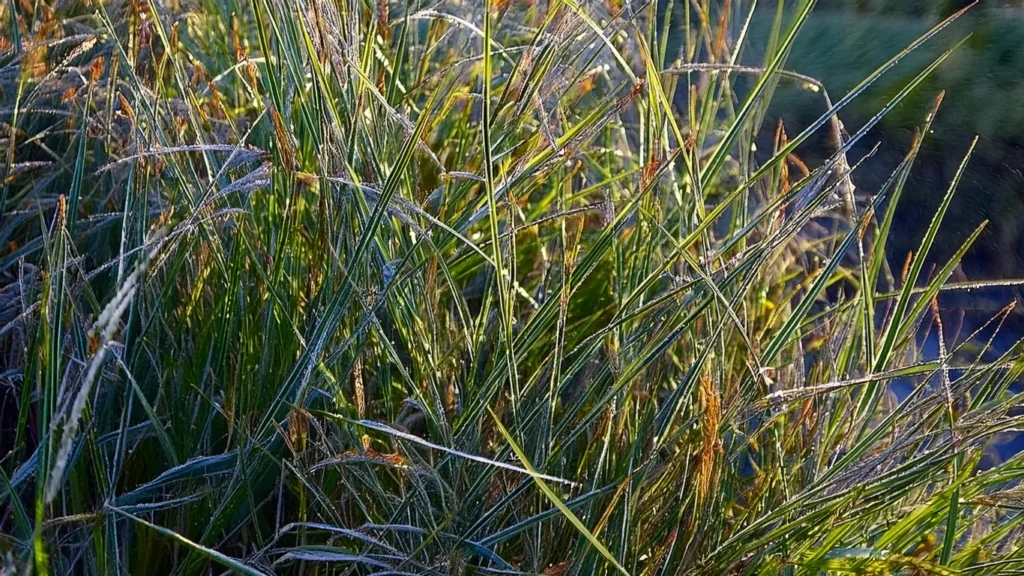
Recommended Tank Size
- Nano Tanks: Isoetes velata can thrive in nano tanks with capacities ranging from 5 to 20 gallons. These smaller setups provide a compact yet suitable environment for cultivating this aquatic plant species. Nano tanks are ideal for aquarists with limited space or those looking to create a small-scale aquascape.
- Medium Tanks: For aquarists seeking a larger display, medium-sized tanks ranging from 20 to 50 gallons offer ample space to accommodate Isoetes velata along with other aquatic plants and livestock. Medium tanks provide more room for aquascaping creativity and can support a diverse range of plant and animal species.
- Large Tanks: In larger tanks exceeding 50 gallons, Isoetes velata can be incorporated into expansive aquascapes alongside a variety of other aquatic plants, rocks, driftwood, and hardscape elements. Large tanks offer the opportunity to create intricate layouts and naturalistic environments while providing ample room for plant growth and development.
Suitable Tank Mates
- Small Fish Species: Opt for small, peaceful fish species that won’t disturb the substrate or uproot plants. Examples include small tetras (e.g., neon tetras, ember tetras), rasboras, guppies, endlers, and some species of small catfish (e.g., Corydoras).
- Shrimp and Snails: Invertebrates such as freshwater shrimp (e.g., cherry shrimp, Amano shrimp) and peaceful snail species (e.g., Nerite snails, Malaysian trumpet snails) can coexist with Isoetes velata without causing harm to the plants. These invertebrates help with algae control and substrate maintenance.
- Bottom Dwellers: Bottom-dwelling fish species that are compatible with planted tanks can be suitable tank mates for Isoetes velata. Consider species such as Corydoras catfish, otocinclus catfish, dwarf suckermouth catfish (e.g., Ancistrus species), and small loaches (e.g., kuhli loaches).
- Non-Digging Species: Avoid species known for digging or burrowing behavior, as they may disturb the substrate and uproot Isoetes velata. This includes many cichlid species, some species of loaches, and certain types of crayfish.
Nutritional Needs Of The Plant
- Carbon Dioxide (CO2): Isoetes velata requires carbon dioxide (CO2) for photosynthesis, the process by which it converts light energy into chemical energy to fuel its growth. In a well-aerated aquarium with sufficient biological activity, carbon dioxide is typically available in the water column.
- Light: Like all plants, Isoetes velata requires adequate light for photosynthesis. Provide moderate to high-intensity lighting in the aquarium to support healthy growth. Position the plant in areas where it can receive sufficient light without being shaded by taller plants or decorations.
- Macro and Micronutrients: Isoetes velata absorbs essential nutrients such as nitrogen, phosphorus, potassium, and micronutrients like iron, magnesium, and calcium from the water and substrate. These nutrients are necessary for various metabolic processes, enzyme function, and structural development within the plant.
- Substrate Nutrients: While Isoetes velata can obtain nutrients from the water column, it may also benefit from nutrient-rich substrates or root tabs. These supplements can provide additional nutrients directly to the plant’s roots, promoting healthy growth and development.

Isoetes Velata Cultivation Tips
- Lighting: Provide moderate to high-intensity lighting in the aquarium to support photosynthesis and healthy growth of this plant. Position the plant in areas where it can receive sufficient light without being shaded by taller plants or decorations.
- Substrate: Use a sandy or muddy substrate to mimic the plant’s natural habitat conditions. Ensure that the substrate is fine-grained and nutrient-rich to provide stability for root anchorage and support nutrient uptake by the plant.
- Water Parameters: Maintain stable water parameters within the recommended range for this plant. This includes a temperature range of 18°C to 25°C (64°F to 77°F), slightly acidic to neutral pH (6.5 to 7.5), and moderate water hardness.
- CO2 and Nutrients: While this plant can obtain carbon dioxide (CO2) and nutrients from the water column and substrate, supplementing with CO2 and providing a balanced nutrient regimen can enhance growth. Consider using liquid or substrate fertilizers to ensure adequate nutrient availability.
RELATED: Eleocharis Pusilla Guide For Proper Care, Tips & Growth
Plant Propagation Tips
- Rhizome Division: This plant reproduces primarily through the growth of rhizomes, which are underground stems. To propagate the plant through rhizome division, carefully separate healthy rhizomes from the parent plant using sharp, sterilized scissors or a knife. Ensure that each divided portion has viable roots attached.
- Runners: This plant may also produce runners, which are horizontal stems that grow along the substrate surface. These runners can develop new plantlets at their nodes. When runners appear, allow them to grow and develop new plantlets. Once the plantlets have established roots, they can be carefully separated from the parent plant and replanted elsewhere in the aquarium.
- Spores: This plant produces sporangia, which contain spores for reproduction. While less common in aquarium settings, spore propagation can be attempted by collecting mature sporangia from the plant and spreading them over a moist substrate. Keep the substrate moist and maintain high humidity levels to encourage spore germination and growth.
Benefits Of Planting Isoetes Velata
- Natural Filtration: This plant helps improve water quality by absorbing nutrients such as nitrogen and phosphorus from the water column. This natural filtration process helps reduce excess nutrients that can lead to algae overgrowth and water quality issues.
- Oxygenation: Like all aquatic plants,this plant releases oxygen during photosynthesis, contributing to the oxygenation of the aquarium water. Adequate oxygen levels are essential for the health and well-being of fish, invertebrates, and other aquatic inhabitants.
- Habitat Enhancement:This plant provides a natural habitat and shelter for small aquatic organisms, including fish fry, shrimp, and snails. The plant’s dense foliage offers hiding places and refuge for these organisms, contributing to a diverse and balanced aquatic ecosystem.
- Aesthetic Appeal: With its delicate, fern-like foliage and vibrant green coloration, Isoetes velata adds visual interest and aesthetic appeal to the aquarium. Its unique appearance can enhance the beauty of aquascapes and create a more naturalistic underwater environment.
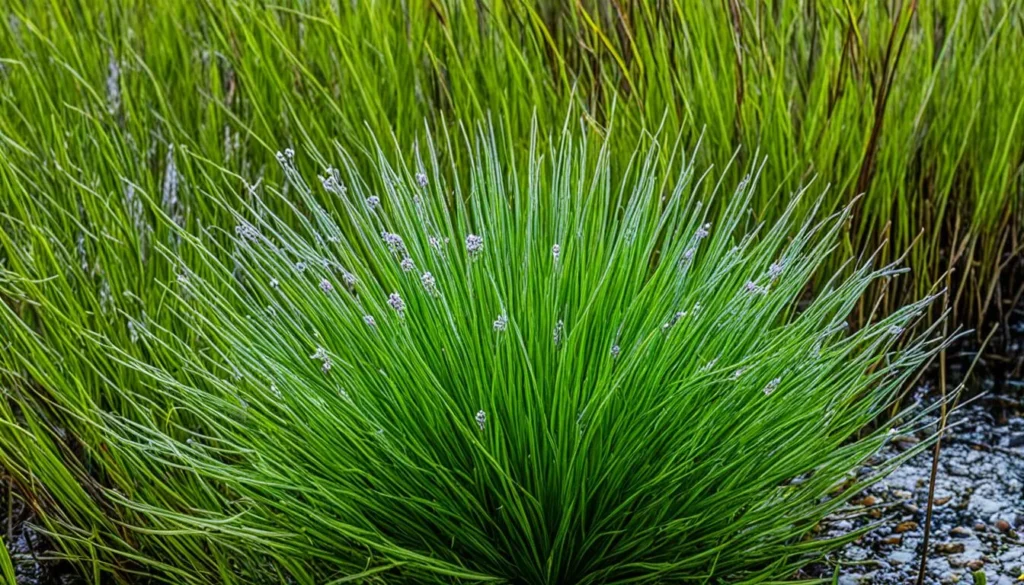
Conclusion
This plant is a hidden gem of the wetlands, holding the secret life of an extraordinary aquatic fern.
Its unique characteristics, conservation status, and care requirements make it a fascinating plant for enthusiasts and a plant worth protecting.
By understanding and appreciating, we can contribute to preserving and appreciating this remarkable wetland plant.
Isoetes Velata’s presence in tropical wet environments and cold water ecosystems highlights its adaptability and importance in these delicate ecosystems.
As we delve into the evolutionary history and significance of Isoetes species, we gain valuable insights into the intricate relationship between these plants and their environment.
Furthermore, the endemic nature of Velata Quillwort emphasizes the fragility and need for conservation efforts.
Preserving the diversity and habitats of rare plants like Isoetes Velata is crucial for maintaining biodiversity and ensuring the long-term health of wetlands.
By adopting best practices for its cultivation and actively supporting conservation initiatives, we can contribute to preserving this wetland plant and its intricate ecosystem.
Frequently Asked Questions
How Does Isoetes Velata Reproduce?
This plant reproduces through spore reproduction.
Understanding the mechanisms of spore reproduction provides insights into its reproductive strategies and the importance of spores in its life cycle.
Why Is Isoetes Velata Popular Among Aquarium Hobby Groups?
This plant, particularly the variety Isoetes Velata Var.
Sicula is a sought-after plant in the aquarium hobby. Its unique characteristics and adaptability make it a favorite choice among hobbyists.
How Can We Contribute To The Conservation Of Isoetes Velata?
The conservation of this plant and other rare plants is of utmost importance.
Understanding the role of conservation in preserving Isoetes species and the challenges involved in protecting the delicate balance of the Isoetaceae family can contribute to their preservation and appreciation.
Are There Any Real-Life Customer Experiences Growing Isoetes Velata At Home?
Yes, real-life customer experiences provide valuable insights into growing Isoetes Velata at home.
These experiences offer practical tips and advice for plant enthusiasts who wish to cultivate and enjoy the beauty of Isoetes Velata in their own homes.
What Are The Best Practices For Cultivating Isoetes Velata?
Cultivating Isoetes Velata successfully requires adherence to specific best practices.
Substrate choice and water quality are essential for creating an optimal environment for this aquatic fern.
Additionally, expert tips from experienced aquarists provide valuable insights for ensuring the thriving growth of Isoetes Velata.
- Unveiling The Wonders Of Riccia Fluitans In Aquascapes - August 7, 2024
- Vallisneria Gigantea Var. Guide To Care And Cultivation At Home - July 31, 2024
- Vesicularia Dubyana Care & Growth Guide Tips For Beginner Gardeners - July 30, 2024
